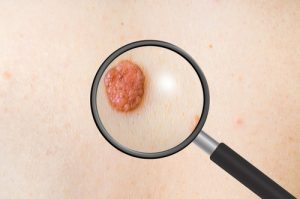May is Melanoma Awareness Month. As we come to the end of May and the beginning, for all intents and purposes, of summer, a quick briefing on this deadly cancer is in order. Whether you live here in South Florida or are one of the hundreds of thousands of tourists that flock to the area each year, it is important to be aware of the dangers of the sun.
Why Melanoma Is Misdiagnosed
Before we continue, we should talk about why melanoma may be misdiagnosed. Most people know what melanoma is, and there are multiple PSAs telling people how to check moles and to have their moles checked. It would seem that a doctor would be able to diagnose the condition quickly and accurately.
The truth of the matter is that doctors are human and do make mistakes. When it comes to melanoma, one of the mistakes that doctors make is preforming cryosurgery on the area. Cryosurgery is more commonly known as freezing. Experts suggest that freezing what may be melanoma could be dangerous because it only freezes off the top layers, allowing the melanoma to grow vertically into the body and spread.
The second mistake that doctors make is failing to have a lesion studies. Any pigmented lesion that is removed from the body through excision or biopsy should be sent to a laboratory for a histologic exam. The only skin abnormalities that can be safely discarded are skin tags, sebaceous cysts and lipomas that are typical in nature.
What is Melanoma?
Melanoma is a type of cancer that occurs when there is DNA damage within the skin cells. This damage triggers mutations which lead to malignant tumors. A melanoma may develop from a mole, or may only resemble one. Most melanomas are brown or black in color, but they may be purple, white, blue, red, pink or skin-colored. When discovered and treated early enough, melanoma is typically curable.
Warning Signs of Melanoma
The warning signs of melanoma are most easily remembered by the alphabet. “ABCDE” can all help you detect melanoma on yourself or someone you love. Here’s what the letters mean.
- A for asymmetry. Take a mole on your body and draw a line through the middle, either vertically or horizontally. The sides will be mirror images of each other or very close. If you draw a line through the center of a mole and the sides are not asymmetrical, you could be looking at melanoma.
- B for border. The borders of a normal mole are smooth and even. Malignant melanoma has borders that are uneven and notched.
- C for color. A mole is typically all one color. A melanoma has different shades of black, brown or tan. It may even become red, blue or white.
- D for diameter. Melanomas are typically larger than an eraser on a pencil. Moles are typically much smaller.
- E for evolving. The moles that you have on your body typically look the same over time. When a mole changes shape, color or some other trait, it could be melanoma. At the very least, it is worth getting checked out.
Are You at Risk?
While melanoma can develop in just about anyone, certain people are most at risk. These people include those with regular sun exposure that has led to sunburn, multiple moles, certain skin types, a personal history and a weakened immune system.
People who have close relatives that have been diagnosed with melanoma are also at a higher risk for developing the cancer. A person with a first-degree relative that has been previously diagnosed with melanoma has a 50 percent increased risk compared to someone with no family history of the cancer.
You Can Prevent Melanoma
There are ways that you can prevent melanoma.
- Avoid the sun between the hours of 10 am and 4 pm. This is when the rays are strongest.
- Make every attempt to avoid being burned by the sun.
- Do not “lay out” to tan and avoid tanning beds.
- If you are going to be exposed to the sun, wear a loose-fitting, long-sleeved shirt and long pants.
- Use a sunscreen with an SPF of at least 15 every day.
- Reapply sunscreen every two hours.
- Examine your skin monthly.
- See your doctor once a year for a skin exam.
When melanoma goes undiagnosed, or is misdiagnosed, you could be risking your life. No matter how innocent you believe a mole to be, you should only rely on the medical opinion of a trained professional.
If you believe that you have been misdiagnosed with any disease or condition or have not been diagnosed when you should have been, reach out to our team of medical malpractice attorneys in West Palm Beach. We have the knowledge you need as you fight for what you deserve. Call now to schedule your appointment for a free case evaluation.

